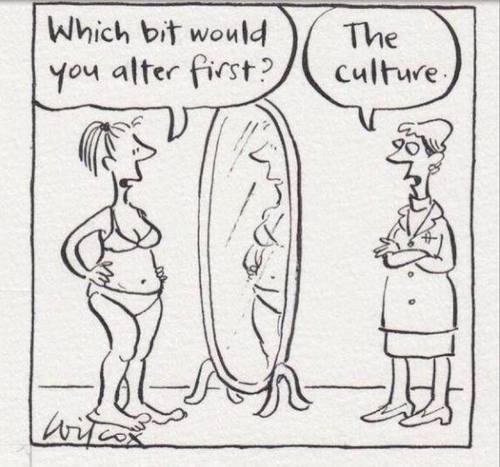Learning to Love (and listen to!) Your Body
/Keith Haring, "Untitled," 1985. Feeling pulled in many directions? Learning to love your body might help!
The Learning to Love Your Body group is kicking off this weekend, and I’ve got some pre-work for people who are registered and signed up. But in case you’re wanting a taste of what this group is about, I’ve decided to share it here so that you can feel fed and engaged by the possibility of living a life where you cherish, love, listen to, and enjoy your body.
First, have you seen Jes Baker’s talk about the Social Impact of Body Love on Everyday Feminism? If you haven’t, take a look here. We’ll be talking about this video on day two of the group, but it’s so ripe with content that it’s worth watching a few times over. Some of the statistics might surprise you. (Did you know that 81% of 10-year-olds are afraid of being fat? And that they’re more afraid of being fat than they are of cancer, war, or losing both their parents?) Jes Baker also has an awesome blog at www.themilitantbaker.com.
Next, I’m encouraging everyone to purchase or borrow a copy of Embody by Connie Sobczak. I’ll be using some of the exercises from this book in our group, and we’ll be reading passages from the five Core Competencies of the Be Body Positive model. We’ll start with learning how to Reclaim Health, meaning, how to live in a way that prioritizes a holistic view of health with you as the expert of your body. Practicing intuitive self-care, cultivating self-love, declaring your own authentic beauty, and building community are the remaining competencies, and we will explore how to integrate these in your life in the Learning to Love Your Body group.
Finally, here is a set of questions to get you started on the path toward learning to love—and listen to—your body!
Start by finding, borrowing, buying, or making a journal. Think about your answers to these questions and write down your responses. Take as much time as you like and be as messy and incoherent as you wish. Nobody will read this except you. We'll talk more about these ideas and will have more time to explore them in person, but to get your mind working, try these on:
1. What kind of messages have I received about my body throughout my life? Where do they come from? What do I believe about my body and other people’s bodies?
2. What do I wish I felt about my body? If I felt free enough to be in love with my body, how would I know? What would be different in my life if I felt more love for myself and listened to myself?
3. What might be blocking me from loving my body and living fully in my life?
If you’re not planning on participating in the group, or not able to make it in person, try this exercise with a friend or two. When you set into your intentions and allow your creative self to come forward, you might like to light a candle and some sage, juniper, or copal, and carve out about 20-30 minutes to write in silence. If you and some friends sit down to do this together, try setting your individual intentions out loud with each other in just a few words, and then when you’re finished writing, share what your process has been and what you have learned from responding to the prompts.
If you'd like to learn more and see a video where I describe more in-depth the intention and practice of the group, visit my page Body Love Group. You can also call me at 510-594-4035 or send me an email at therapy@mollymerson.com . I look forward to hearing from you!
To cite this page:Merson, M. (2015) Learning to Love (and listend to!) Your Body. Retrieved month/day/year from http://mollymerson.com/2015/02/02/learning-to-love-and-listen-to-your-body/. Please note that this column is not intended to treat, diagnose, or prevent any disease. This post is for entertainment and informational purposes only. I do not offer advice to people whom I do not know and whom I am not currently treating in my practice, and even then, it is not a general practice for me to offer advice to my clients as their decisions are their own to make. If you are in need of mental health support, please seek out a licensed professional to begin ongoing therapeutic treatment.



